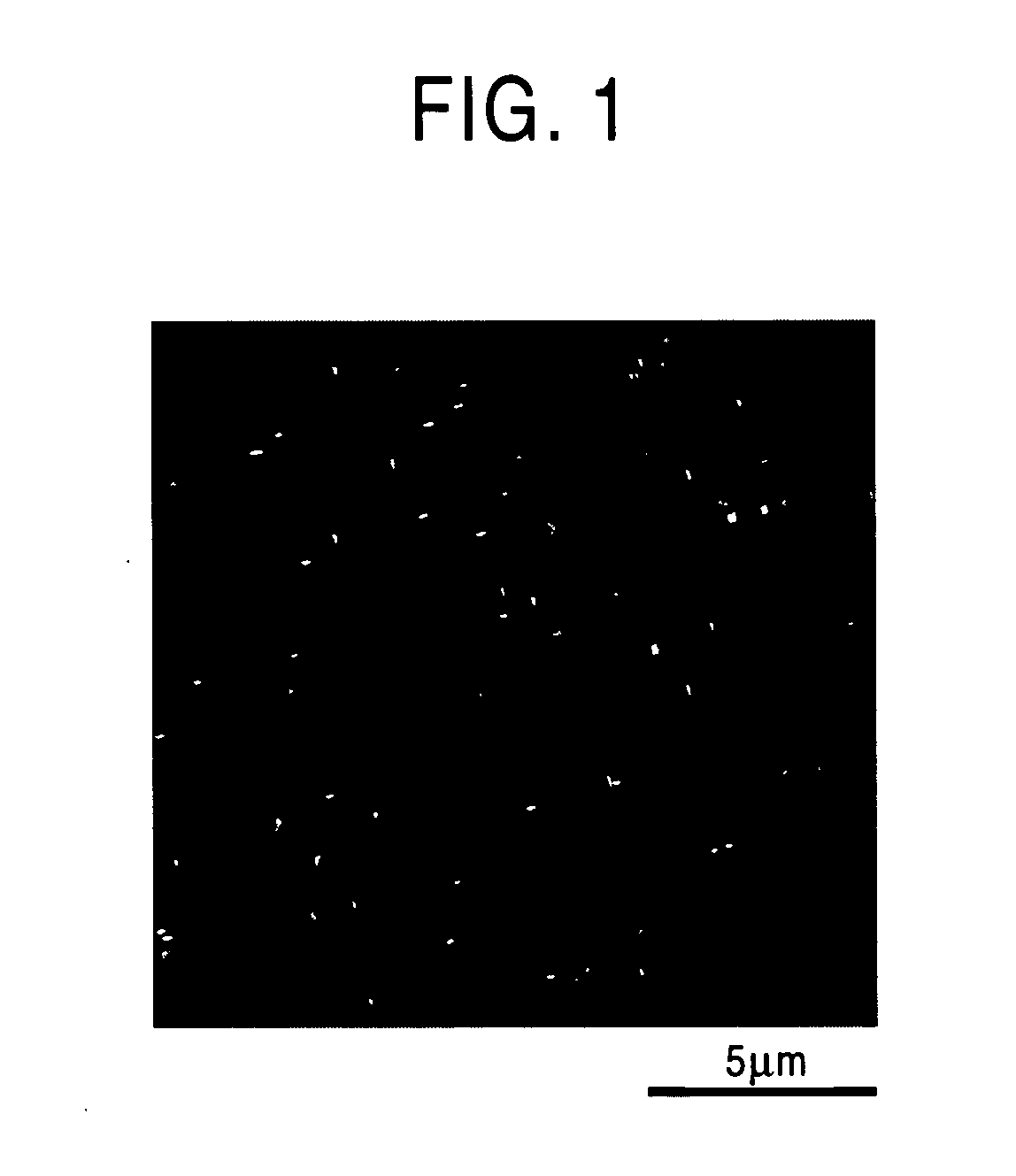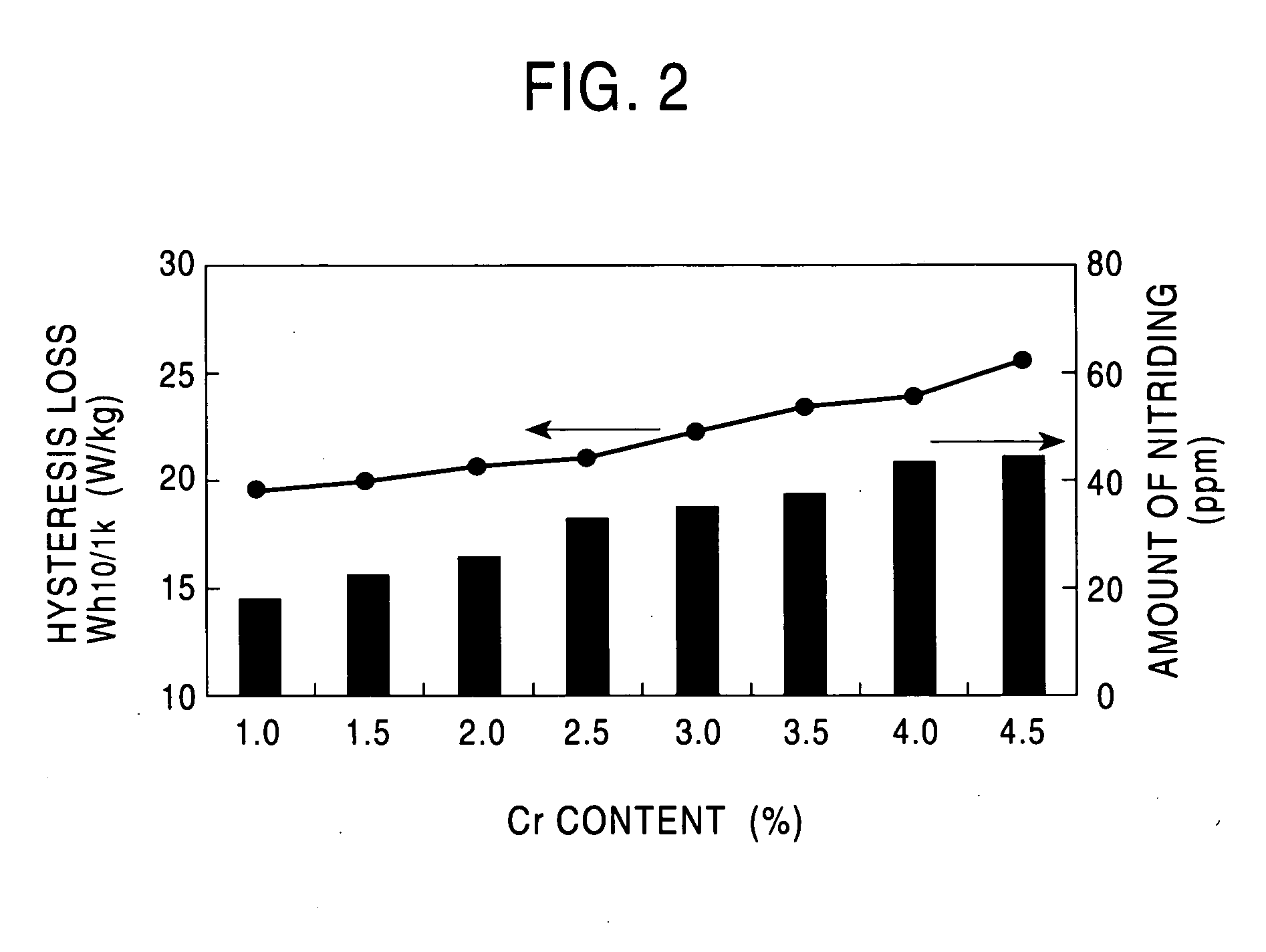Fe-cr-si based non-oriented electromagnetic steel sheet and process for producing the same
a non-oriented electromagnetic steel and fe-cr-si technology, applied in the direction of magnetic materials, solid-state diffusion coatings, magnetic bodies, etc., can solve the problems of high iron loss, deterioration in workability, difficult to perform manufacture and work by ordinary rolling, etc., to achieve satisfactory iron loss, improve workability, and improve iron loss
- Summary
- Abstract
- Description
- Claims
- Application Information
AI Technical Summary
Benefits of technology
Problems solved by technology
Method used
Image
Examples
example 1
[0122] Steels each containing the composition shown in Table 3 and the balance being Fe and incidental impurities were cast, the resulting slabs were heated at 1,150° C. and hot-rolled to produce hot-rolled sheets with a thickness of 2.0 mm. Next, steels A to P and W were subjected to hot-rolled sheet annealing at 1000° C., and the final thickness was set at 0.25 mm by a single cold rolling process. On the other hand, steels Q to V were not subjected to hot-rolled sheet annealing, and the final thickness was set at 0.15 mm by a double cold rolling process including intermediate annealing at 900° C. Each steel sheet was subjected to final annealing at 980° C. to 1,040° C. for 10 seconds. The resulting steel sheet was cut into an Epstein sample and magnetic properties thereof were evaluated. The measurement was performed in accordance with JIS C 2550.
[0123] The electrical resistivity, thickness of the product, atmosphere gas in final annealing, annealing temperature, iron loss, amoun...
example 2
[0135] With respect to steels Q, R, S, and T shown in Table 3, the final thickness was set at 0.15 mm by the process described in Example 1, final annealing was then performed at 900° C. for 10 seconds, and the iron loss at a higher-frequency range was evaluated. The measurement results are shown in Table 8.
TABLE 8Number ofFinal annealingnitridesconditionscontainingElectricalAnnealingIron losschromiumSteelresistivityThicknessAnnealingtemperatureW0.5 / 20kprecipitatedID(μΩcm)(mm)atmosphere(° C.)(W / kg)(per mm2)RemarksQ86.940.15N2:H2 = 70:3090010.258 × 105CE86.940.15N2:H2 = 20:809008.761,500EP86.940.15Ar9008.42EPR85.820.15N2:H2 = 70:309008.64EP85.820.15N2:H2 = 85:159008.68EP85.820.15N29009.757,000CES89.20.15N2:H2 = 70:309008.43EP89.20.15N2:H2 = 50:509008.39EP89.20.15H29008.29EP89.20.15N2:H2 = 90:109008.62500EPT88.150.15N2:H2 = 70:309008.55EP88.150.15Ar9008.46EP88.150.15N29009.686,000CE
PUM
| Property | Measurement | Unit |
|---|---|---|
| frequency | aaaaa | aaaaa |
| frequency | aaaaa | aaaaa |
| frequency | aaaaa | aaaaa |
Abstract
Description
Claims
Application Information
 Login to view more
Login to view more - R&D Engineer
- R&D Manager
- IP Professional
- Industry Leading Data Capabilities
- Powerful AI technology
- Patent DNA Extraction
Browse by: Latest US Patents, China's latest patents, Technical Efficacy Thesaurus, Application Domain, Technology Topic.
© 2024 PatSnap. All rights reserved.Legal|Privacy policy|Modern Slavery Act Transparency Statement|Sitemap



